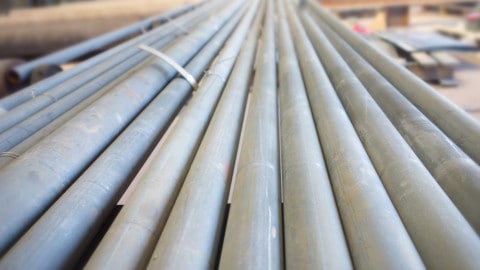By Ehsan Farno and Nicky Eshtiaghi, Chemical and Environmental Engineering, School of Engineering, RMIT University
Wastewater treatment is an integral part of the sustainable development of modern cities. According to international water association (2017), only 20 per cent of all wastewater is treated globally. Meanwhile, this figure is projected to increase substantially by 2030 as part of the sustainable development goals, UN-Water 2017 theme. Additionally, factors including population growth, water shortage and stricter environmental regulations demand a considerable increase in the capacity as well as the efficiency of current wastewater treatment plants (Munro-Smith 2018).
A large portion of the total energy consumption in wastewater treatment plants is used for pumping wastewater and sewage within the treatment processes (Longo, d’Antoni et al. 2016). Although the energy usage of the sludge transportation systems is critically important, wastewater pumping systems are not commonly operating in their best efficiency points. By improving the pumping systems, better energy efficiency for wastewater treatment processes can be achieved. Several reasons underlie the inefficient operation of sewage sludge pumping systems.
-
Typical variation of sludge rheology
Composition of sludge is subjected to seasonal change as such in rain season there is more water in the influent of a wastewater treatment plant or hot summer the sludge microorganisms are more active, and the biological treatments are more efficient (Mahmoud, Zeeman et al. 2004, Water Environment 2008).
So far, no research has shown the variation of sludge flow properties due to the season changes or process changes. Because of that, pumping systems were designed based on significant assumptions of the sludge flow properties to accommodate such variations.
To address this issue, we have determined the rheological variation of three types of sludge over one-year of measurements in a wastewater treatment plant in Melbourne, VIC using Herschel-Bulkley model. Figure 1 shows the relative variability of sludge rheology as well as its composition. It shows the extent of variability concerning the mean of data.

Among the Herschel-Buckley parameters, variation in k impacts more than others on the variation of pressure drop in the pipeline. k shows 34 per cent relative variation in digested sludge, 54 per cent in primary sludge and 61 per cent in thickened waste activated sludge. While, τH shows 20 per cent relative variation in digested sludge, 40 per cent in primary sludge and 40 per cent thickened waste activated sludge.
Also, our studies (Farno, Baudez et al. 2015, Hii, Farno et al. 2019) suggested a possibility of predicting rheology from the variation of organic matter. In this method, a variation of solubilised organic matter in respect to the original soluble organic matter before thermal treatment was shown directly proportional to the variation of rheological parameters of sludge with respect to their values before the treatment. We also showed that the percentages of sludge solubilisation and its solubilisation kinetic rate were not influenced by sludge concentration.
-
Pressure drop calculation
The design of wastewater pumping systems requires a reliable means of calculating pressure drop at various flow rates. But due to the complex behaviour of sludge (i.e. flow behaviour) which typically requires a few rheological parameters rather than a single ‘viscosity’ (Malkin, Masalova et al. 2004, Slatter 2004), pressure drop calculations are not accurate.
To obtain the rheological data, one needs to fit the sludge flow curve with a rheological model (Mulbarger, Copas et al. 1981, Carthew, Goehring et al. 1983, Eshtiaghi, Markis et al. 2013). Three models mostly used for sludge are Bingham Plastic, Herschel-Bulkley and modified Herschel-Bulkley:

Where τ [Pa] is shear stress, γ= -dv/dr [s-1] is shear rate, v [m/s] is velocity along the flow direction (e.g., along a pipeline), r [m] is flow cross section distance (e.g. radial distant from pipe centre), and τB [Pa], τH [Pa], k [Pa.sn], n [-] and α [Pa.s] are fitting parameters of the models.
As the parameters increase in the model, the model becomes non-linear, while the predictions are more accurate, the fitting procedure and the pressure drop calculations become more complicated.
2.1. Regression analysis
Common fitting software dealt with non-linear models (e.g. Herschel-Bulkley and modified Herschel-Bulkley) just like a minimisation problem defined with an objective function to be minimised at a value. As such, the operator can choose between different objective functions, algorithms as well as model equations which impact on the results (Dochain and Vanrolleghem 2001).
In contrast, for Bingham-Plastic model, there is an analytical solution derived by differentiating the objective function concerning the model parameters. It is worth noting that, some minimisation methods linearised the non-linear models to reduce the complexity of parameters estimation which leads to biased results.
Generally, in a curve fitting, the measured variables are assumed independent holding an identical normal distribution at each measured point. But this is not always the case. For sludge, we showed that the residual error of flow curve fitting where Herschel-Bulkley and Bingham models are used is not normally distributed and increases with shear rate. To make fitting better for this system, one solution is to give weighting to residual errors but to avoid subjective judgments; one can use robust algorithms. In a robust fitting, outlier data do not impact on the estimation of model parameters (MathWorks 2016).
Another approach is to cut the data posing large residual errors at the high shear rate where pumping system is not operated. In fact, no perfect algorithm exists for estimating nonlinear model parameters. Through residual analysis on a broad set of sludge flow curve data, the best scenario for sludge parameter estimation has been identified in Table 1 (Farno, Coventry et al. 2018).

Table 1: Regression scenarios with the best performance for each sludge sample.
Herschel-Bulkley model best-fitted sludge flow curve data between 10-300 s-1 with a robust fitting method while modified Herschel-Bulkley best-fitted sludge flow curve data between 0.1-1000 s-1 with either robust or conventional fitting method. Bingham Plastic model only shows acceptable performance for primary sludge.
Nevertheless, there are no unique results for non-linear parameter estimation (Dochain and Vanrolleghem 2001). Each parameter is determined with a confidence region (commonly 95 per cent confidence is selected) in which true model parameter exists. As a result, the calculation of pressure drops using the fitting parameters within the confidence region results in a range of pressure drops and not a unique value.
To investigate the impact of variation of rheological parameters on pressure drop calculation, critical pressure drops (transition point from laminar to turbulent) was calculated by integrating Eq.1 to 3 in respect to a pipe radius (Eq.4) and using Re3 friction model.
Eq.4 has an analytical solution for α equals to zero, but the numerical approach is required for n and α ≠ 0.
Figure 2 presents the probability distribution of critical pressure drop calculation in a typical sludge pipeline (300m length and 100 mm diameter) when the model parameters vary in the 95 per cent confidence region.

Figure 2: Probability distribution of calculated critical pressure drop using three models, (a) Bingham Plastic (b) Herschel-Bulkley (c) modified Herschel-Bulkley, in a typical sludge pipeline (two per cent digested sludge in a pipeline composed of 300m length and 100mm diameter). With permission from Water Research for this figure published in Farno et al. 2018.
By comparing the variation of the pressure drop because of variation of fitting parameters, it was shown that among the studied models, the Herschel-Bulkley model performed best (least standard deviation); it fits a reasonably good range of shear rates whereas it does not induce uncertainty over pressure drop calculations.
Whereas, modified Herschel-Bulkley fits better but produced massive uncertainty over the pressure drop calculation. Also, Bingham-Plastic model was shown unable to fit most sludge flow curve in addition to the wide variation in calculated pressure drop.
We also performed a sensitivity analysis to compare the impact of variation of each parameter on pressure drop calculation which showed for all models, k has the highest sensitivity (Table 2).

Table 2: Sensitivity analysis of pressure drop calculation (With permission from Water Research for this table published in Farno et al. 2018).
- A design gadget to meet the demands
We have developed a gadget software for the industry to design and optimise pipeline systems. We adopted Re3 friction loss model which was successfully used in mineral industries to develop this new platform for sewage sludge.
Although a rule of thumb was adequate for calculating pressure drop, and the laminar-turbulent transition point in a dilute sludge pipeline, for sludge at high concentration which exhibits significant visco-plastic property, a precise calculation based on Re3 friction loss model requires. This adoption is based on the similarities between the rheological behaviour of thickened sludge and thickened mineral slurries.
The gadget was also made capable of fitting the three models to raw flow curve data by implementing the best regression methods mentioned above. It can predict pressure drop of a number of pipes at different diameters to estimate total pressure drop and provide the system curve for each pipe (Figure 3).
By utilising this gadget, engineers are not only able to use our specialised regression method to obtain rheological properties, but they can also visualise the laminar-turbulent transition point. So by this way, they can optimise the system to prevent laminar settling as well as inefficient heat transfer in heat exchangers which happens in laminar flow.
Another interesting feature of this platform is that it can predict the rheology of three types of sludge (anaerobic digested sludge, waste activated sludge and primary sludge) from its solid concertation and organic matter content using a fully trained model by experimental data.

Figure 3: Design gadget for sludge pipeline.


















